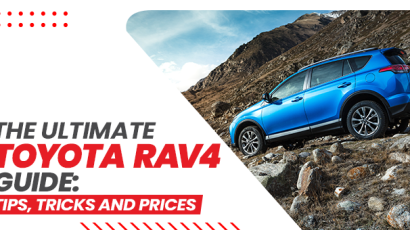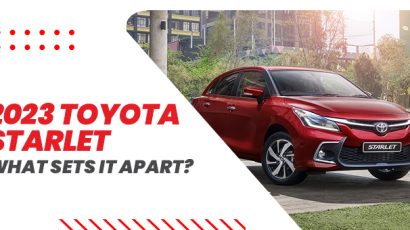
The Toyota Blade, a name synonymous with sophistication and performance, carved its niche in the automotive world between 2006 and 2012. Essentially the upscale variant of the Auris, the Blade targeted drivers seeking a compact car with a touch of luxury.
This article serves as a comprehensive guide for anyone considering the Toyota Blade. We’ll delve into its specifications, fuel efficiency, and pricing in Tanzania (a popular import destination) and explore the comfort and features offered by the interior. So, buckle up and get ready to discover if the Toyota Blade is the perfect ride for you.
Toyota Blade Specifications: A Performance Powerhouse
The Toyota Blade boasted impressive specifications that translated into a smooth and powerful driving experience. Here’s a closer look:
Engine Options: The Blade came in two engine configurations. The base model sported a 2.4-liter 2AZ-FE engine, churning out a respectable 167 horsepower and 224 Nm of torque. Gear changes were handled by a continuously variable transmission (CVT), promoting a seamless driving experience. For those seeking more power, the top-of-the-line Blade Master offered a 3.5-liter engine, but this variant was rarer and might be harder to find in the second-hand car market.
Drivetrain: Furthermore, the Blade came with front-wheel drive (FF) and all-wheel drive (AWD) options. The AWD option provided enhanced traction and control in challenging weather conditions, making it a compelling choice for drivers in Tanzania’s diverse terrain.
Dimensions: Besides, the Blade falls under the compact car category with dimensions that make it perfect for navigating city streets. It is approximately 4,400 mm long, 1,760 mm wide, and 1,520 mm tall. This size provides a fair balance between interior room and mobility.
Weight: Moreover, the curb weight of the Blade hovered around 1,460 kg, depending on the variant and features. This weight ensures a stable driving experience without compromising fuel efficiency.
Toyota Blade Fuel Consumption: Striking a Balance
The Toyota Blade is an economical car when it comes to fuel efficiency. As a result, many people find that it makes a practical choice for everyday driving. However, the numbers can shift depending on one’s driving style and the model year. The averages are given below:
2.4-Liter Engine: The base model with the 2.4-liter engine was expected to deliver fuel consumption in the range of 12-14 kilometers per liter (km/L) in city driving and 16-18 km/L on highways.
3.5-Liter Engine: As expected, the more powerful 3.5-liter engine variant consumed slightly more fuel. Estimates suggest a city driving range of 10-12 km/L and a highway range of 14-16 km/L.
It’s important to remember that these are just estimates. Factors like driving habits, road conditions, and car maintenance can affect fuel efficiency.
Toyota Blade Price in Tanzania: Exploring Affordability
The Toyota Blade is no longer in production and is only available via second hand sellers. The price in Tanzania will depend on several factors, including:
Model Year: Newer models will naturally command a higher price tag.
Mileage: It is one of those factors where less is better but more expensive.
Variant: The top-of-the-line Blade Master variant with the 3.5-liter engine will likely be pricier than the base model with the 2.4-liter engine.
Condition: The cost will be greatly impacted by the general state of the vehicle, which includes both the external and interior aesthetics and mechanical health.
Given these considerations, it’s challenging to provide a definitive Toyota Blade price in Tanzania. However, a reasonable estimate for a well-maintained, mid-range model-year Blade with a 2.4-liter engine could fall between 5,000,000 and 8,000,000 Tanzanian shillings (TZS). Before making a purchase, it’s critical to carry out in-depth research and evaluate rates from several used vehicle dealerships.
A Glimpse Inside: The Toyota Blade Interior
Stepping inside the Toyota Blade reveals a comfortable and stylish cabin designed with functionality and luxury in mind. Here are some key highlights:
Seating: The Blade offered comfortable seating for five adults. The seats were upholstered in either high-quality fabric or leather (depending on the trim level), providing a touch of sophistication. The front seats were designed to be supportive for long drives, while the rear seats offered adequate legroom and headroom for most passengers.
Dashboard: The dashboard design is sensible, with all controls and buttons within easy reach of the driver. The instrument cluster was clean and simple to read, displaying important information at a glance. Higher trim levels might include features like a multi-information display with trip computer functions.
Technology: While not the most cutting-edge by today’s standards, the Blade offered a decent array of technology features for its time. These could include an audio system with a CD player and optional auxiliary input for connecting external music sources. Higher trim levels can include a navigation system and a sunroof to enhance the driving experience.
Cargo Space: The Blade offered a decent amount of cargo space, making it suitable for running errands or weekend getaways. The rear seats are foldable, which expands the cargo capacity.
Overall, the Toyota Blade’s interior prioritizes comfort and functionality without neglecting a touch of luxury. While some aspects of the technology might feel dated compared to modern cars, the overall design remains clean and aesthetically pleasing.
Final Considerations: Is the Toyota Blade Right for You?
The Toyota Blade presents a compelling option for drivers in Tanzania seeking a stylish and well-performing compact car. The benefits and drawbacks of the Blade will assist you in determining whether it is the right choice for you:
Pros:
Sleek and Sophisticated Design: The Blade boasts a timeless design that turns heads.
Powerful Engine Options: The base model offers sufficient power, while the 3.5-liter engine caters to those seeking more oomph.
Decent Fuel Efficiency: The Blade strikes a fair mix between efficiency and performance.
Comfortable and Functional Interior: Both drivers and passengers will find the cabin to be comfortable when traveling.
Relatively Affordable: Despite no longer being a production model, the Blade is available at moderate costs on the second-hand automobile market.
Cons:
Discontinued Model: Parts availability might be a concern in the future.
Dated Technology: The infotainment system might feel outdated compared to modern cars.
Limited Safety Features: Compared to newer cars, the Blade might lack some advanced driver-assistance features.
Finding the Right Model: With limited production, finding a specific model or variant might be challenging.
Conclusion
The Toyota Blade stands as a testament to Toyota’s commitment to crafting stylish and well-engineered cars. While no longer in production, it remains a compelling option in the used car market, especially for those seeking a balance between performance, comfort, and affordability. Carefully weigh the pros and cons, and conduct a thorough inspection before purchasing a used Blade. With its timeless design and practical features, the Toyota Blade could be your ideal companion for navigating the Tanzanian roads.











